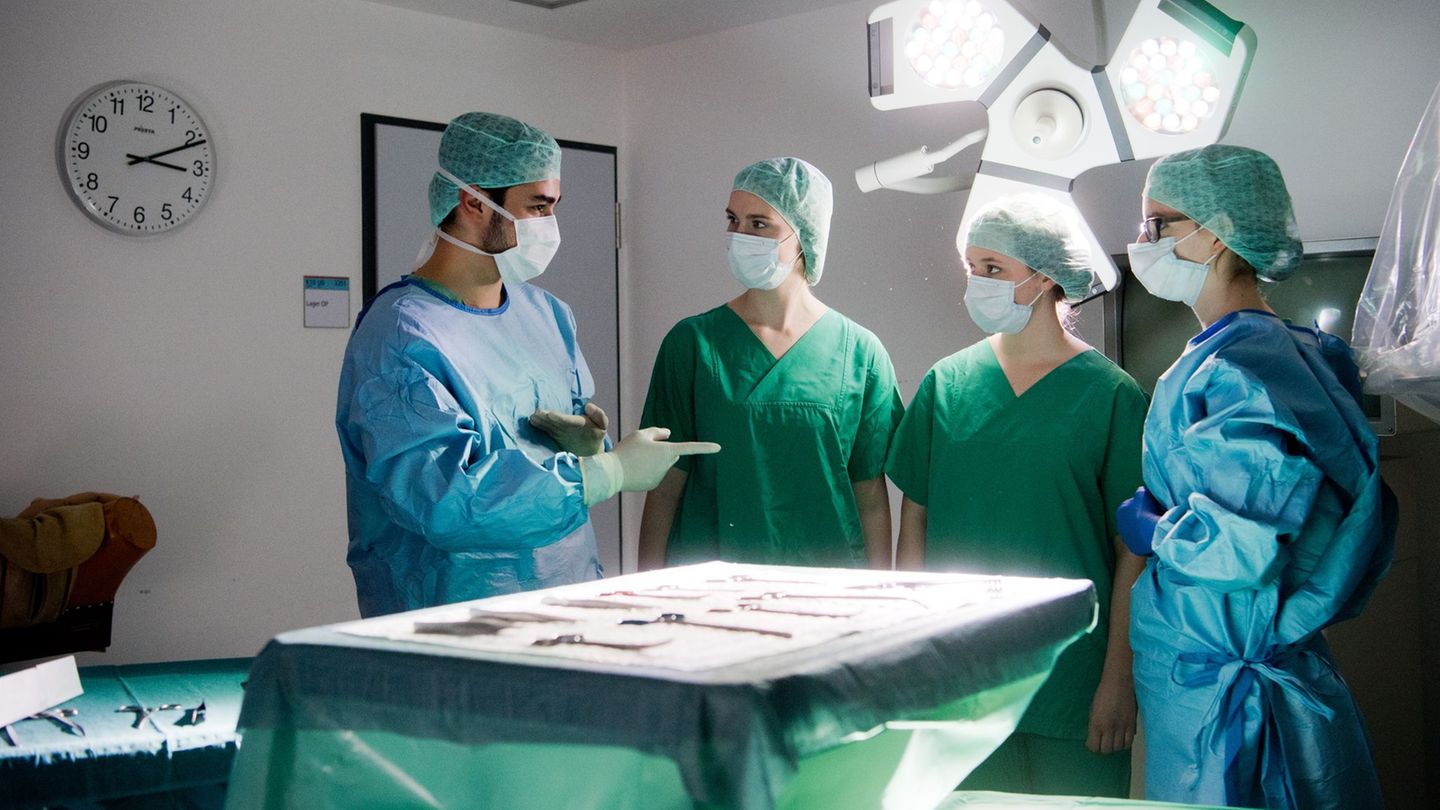Medical offspring
Analysis: too few medical study places against a shortage of doctors
Copy the current link
Add to the memorial list
Are the medical study places enough to fix the shortage of skilled workers? An evaluation denies this. There are large differences in numbers among the countries in the training of young medical youngsters.
According to a study, there is an enormous differences among the federal states and overall prospective youngsters in the offer of medical study places to remedy the shortage of doctors. The result is an evaluation of the center for university development (CHE). At the same time, it emphasizes that countries that provided more medical study places also benefit from medical care.
Studying medicine is one of the most popular subjects for those interested in study in Germany – and at the same time a place is particularly difficult to get hold of here, it was said by the CHE in Gütersloh. In the 2024/25 winter semester, around 10,000 freshmen were able to get a medical study place at a university. About 20,000 applicants went away empty -handed.
Medical study places are unevenly distributed among countries
In the case of medical study places in relation to the population, the country differences are significant. In Brandenburg and Bremen there has been no state courses for prospective doctors so far, the CHE analysis criticizes. In Brandenburg, however, the newly founded Medical University of Lausitz should start operating in the winter semester 2026/27.
If you look at the academic year 2024, the most people with 2,334 first semesters can start with human medicine in the most populous state of North Rhine-Westphalia. In relation to the population, this means a share of 13 medical study places per 100,000 inhabitants according to the investigation. This means an average position together with Baden-Württemberg and Thuringia.
Don’t you want to miss anything from the star?
Personally, competent and entertaining: Editor -in -chief Gregor Peter Schmitz sends you the most important content from the star-Credaction and arranges what Germany talks about.
In Saarland and Mecklenburg-Western Pomerania, on the other hand, there were a proportionate 29 or 26 medical study places for new students per 100,000 inhabitants, the two countries are ahead. It also looks comparatively good in Saxony-Anhalt, Hamburg as well as in Hesse and Berlin.
Medical study place is cost -intensive for the countries
According to CHE, the main reason for the different commitment of the federal states is likely to be the high costs of medical faculties. The ongoing expenses per year and person alone amount to around 25,000 euros in human medicine/health sciences, it was said, citing the Federal Statistical Office.
Evaluation: The hoped -for “adhesive effect” actually occurs
Medical study places are central to long -term medical care. In view of their investments, the federal states hoped for a “adhesive effect” – that graduates later settled as doctors near the course, Student author Cort -Denis Hachmeister described.
In fact, regions with a medical faculty tend to have a comparatively high doctor density. In addition to large cities such as Hamburg, Berlin, Cologne/Bonn or Munich, regions around the Heidelberg, Freiburg or Lübeck universities also benefited from the youngsters.
Medical graduates do not cover the need for skilled workers
Regardless of numerous appeals from politics and medicine, the number of medical study places in the past almost ten years has only increased slightly from over 9,000 to around 10,000. Although there were also new start -ups from medical faculties or private universities. However, the numbers were far from sufficient to fix the shortage of skilled workers. “Those who create no or too few medical study places contribute to structural undersupply,” emphasized Hachmeister.
In addition to the state universities, there is a total of private universities with a medical studies per year, according to the che places for about 1,500 new students. At least 9,100 men and women from Germany also studied medicine abroad. The deficiency is also not to be reduced with them.
dpa
Source: Stern
I have been working in the news industry for over 6 years, first as a reporter and now as an editor. I have covered politics extensively, and my work has appeared in major newspapers and online news outlets around the world. In addition to my writing, I also contribute regularly to 24 Hours World.




